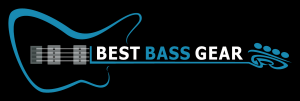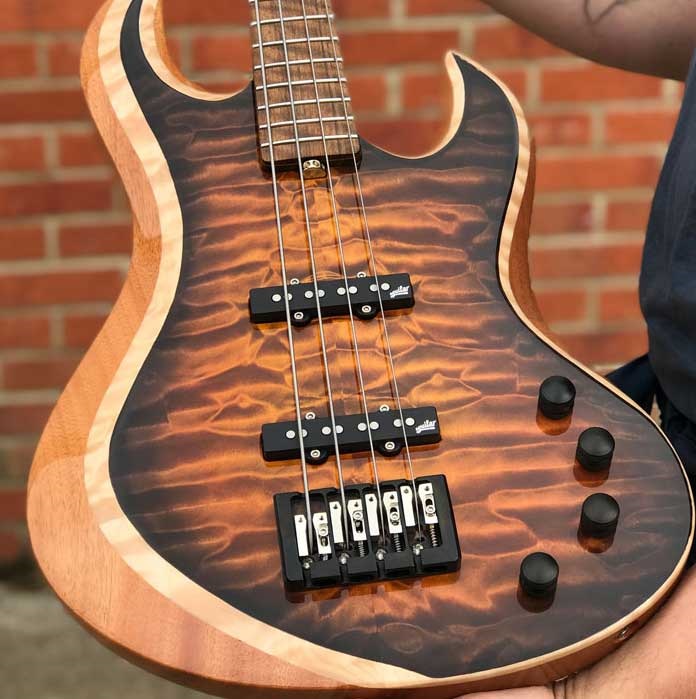See Don Campbell’s business listing here
BBG: How did you get interested in developing passive electronics for electric guitars and basses?
DC: I grew up in the sixties playing drums and studying music. When I decided not to go to college anymore (which I did eventually go back and finish,) I started working for a sound reinforcement company outside of New York; they supported large outdoor concert PA systems. Bear in mind this was back in the days before you could walk into any major guitar store and buy a large set of JBL column speakers.


BBG: There is one particular capacitor frequency that would be “Rick Derringer” tone?
DC: Yes. In the future, we plan on doing some online videos that feature some sound clips to show how to duplicate specific classic rock ‘n’ roll tones with various instruments such as the Stratocaster or a guitar with humbuckers in it. The Derringer tone in particular would be one of the middle settings on a ToneStyler using a guitar with the bridge humbucker of a Gibson guitar engaged. We would be very specific in the video to answer the question of, “How did that guy get that tone?”
BBG: Would you consider yourself more of a guitar player?
DC: I’m what you would call a fair guitar player. I played drums my whole life and that’s where my training is and studied that through music school. Guitar was something I took up later in my early 20’s, mainly because you could play it through headphones and play quietly if you wanted, whereas I started playing drums when I was 10 years old. Had I known it takes a lifetime to learn guitar, I would have taken some lessons!
BBG: When it came time to design the bass Stellartone, was it an automatic extension of what you learned when applying one to the electric guitar?
DC: I was familiar already with the older technology of the Gibson Vari-Tone of the 1960’s, which happened to be in the Gibson EB-3 bass guitar. A bassist in one of our bands had one of those, where I had the chance to work and service that instrument. But when the business started back in 2004, a bass version of the ToneStyler was not planned, even though I was fully aware it could be done. The first month we released the product for the guitar, bass players immediately started contacting us and started asking when we were going to make a bass version. In fact, several Precision Bass players would just outright buy the guitar version of the control, then contact us back and informed us we needed to make one that had a lower range, due to the fact on a bass the range goes about an octave lower. A few months later, we released a baritone version, which did have a range that goes an octave lower than the guitar version, and that’s what we sold as an interim product while we were working on designing circuit board modifications specifically to make a bass version small enough to fit in any bass guitar. Once we were able to get a design that was small enough that retained the high level of build quality, we released the bass series – and those go two octaves lower compared to the standard guitar control. While true that the vast majority of bass players will never use the absolute lowest setting, we put it in there anyway as a “nice to know it’s there” feature. In the way we build things, we’ve learned that designing the control to be able to handle extremes like that makes the musician feel better about what they’re buying because you never “run out of knob,” as the expression goes. 2007 is when we released the 16-position bass series version. Current models are 6-position, 10-position and 11-position.
BBG: After having a product that introduced with 16 different positions, and then releasing later versions that had fewer positions, do you encounter musicians who feel that they’ve lost something due to the fact the current line does in fact have fewer positions?
DC: Among both 6-string guitarists and bassists who use any number of strings, they are happy and satisfied with the range that we have. One of the reasons for this is what we did was that in the newer products, we made different versions among each genre of instrument to suit the player’s needs. The player picks the range he or she likes the most. On a 16-position bass control, it covers all of the guitar’s high frequencies, all of the middle frequencies, all the low frequencies, and then works into the bass frequencies. All these frequencies are useful for a bass, especially considering it has a wider frequency range than a guitar. Shaping the upper treble and midrange of a bass is critical to getting the type of tones that you want. On the 16-position control, there were an awful lot of positions, and you didn’t necessarily need all of them in order to get the result you wanted. The same applies to the guitar control. It was a mixed response from our customers from day one concerning how much of the 16-position control could actually be used. It was requested of us to make a version that had fewer than 16 spaces, due to the fact some of the changes between settings were so subtle that they could only be heard in the studio wearing a headset and not out on stage. There was also the request by customers to make the control simpler to operate, specifically to access the setting they wanted easier while playing live.
BBG: Would it be safe to say that 16 positions is what you want before you hear the control, but once after you hear it, you would want something with fewer settings that is more practical?
DC: Yes. If you had three P-basses lined up, and the first had a Bass 6-position, the second a Bass 10-position, and the third a Bass 16-position, chances are very likely you would gravitate towards the 10-position. The 16-position covers the same sonic range as the 10. The 6 doesn’t go quite as deep, as the 6 in particular matches a standard Fender bass tone pot and has the common 047 capacitor, which is one octave above the Bass 10 and 11. The Bass 10 and 11 use the 0.1 capacitor, which is not common in the manufacturing industry, but is well known by bassists as being “the super-deep capacitor.”
Once you’ve listened to all three instruments, the Bass 10 is usually agreed upon to be the most practical. The 10 essentially has finer gradations of the same thing the 6 offers. The simplest way to describe this is that if you were using a Bass 6 and on position 3, wanted the sound to be bright and switched to position 4, but then said, “I wish there was a position 3.5,” that’s where the Bass 10 comes in.
The Bass 6 has “big steps” between each setting, which for most bass players works well for playing live. The Bass 10 offers finer adjustments for those that need more fine tuning.




I have been using a Bass Tonestyler in Fender 62 VRI and now my ’78 Van Nuys Schecter PJ in Koa with one of two Koa fingerboard on Maple hard V necks they ever made with some Tom Anderson over wound pickups and that old style 16 value switch is the absolute bomb!!! I will never sell this Bass and would use the Bass Tonestyler on ANY passive Bass I would ever own!! It is that amazing….Thanks!!!